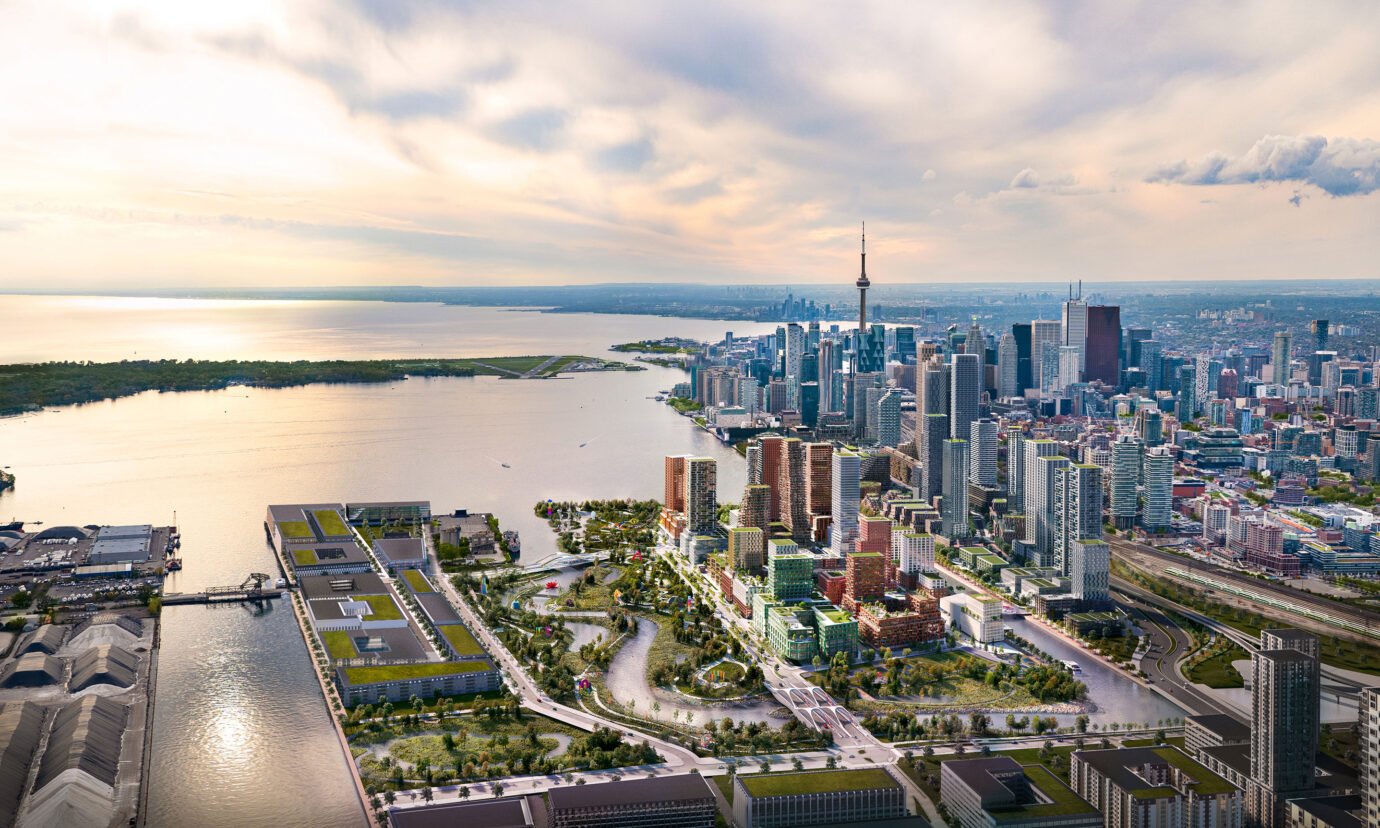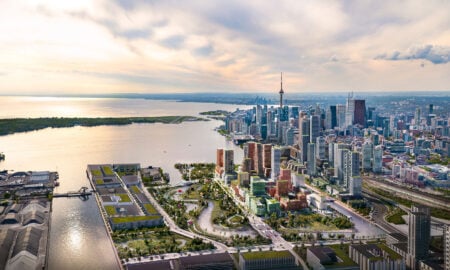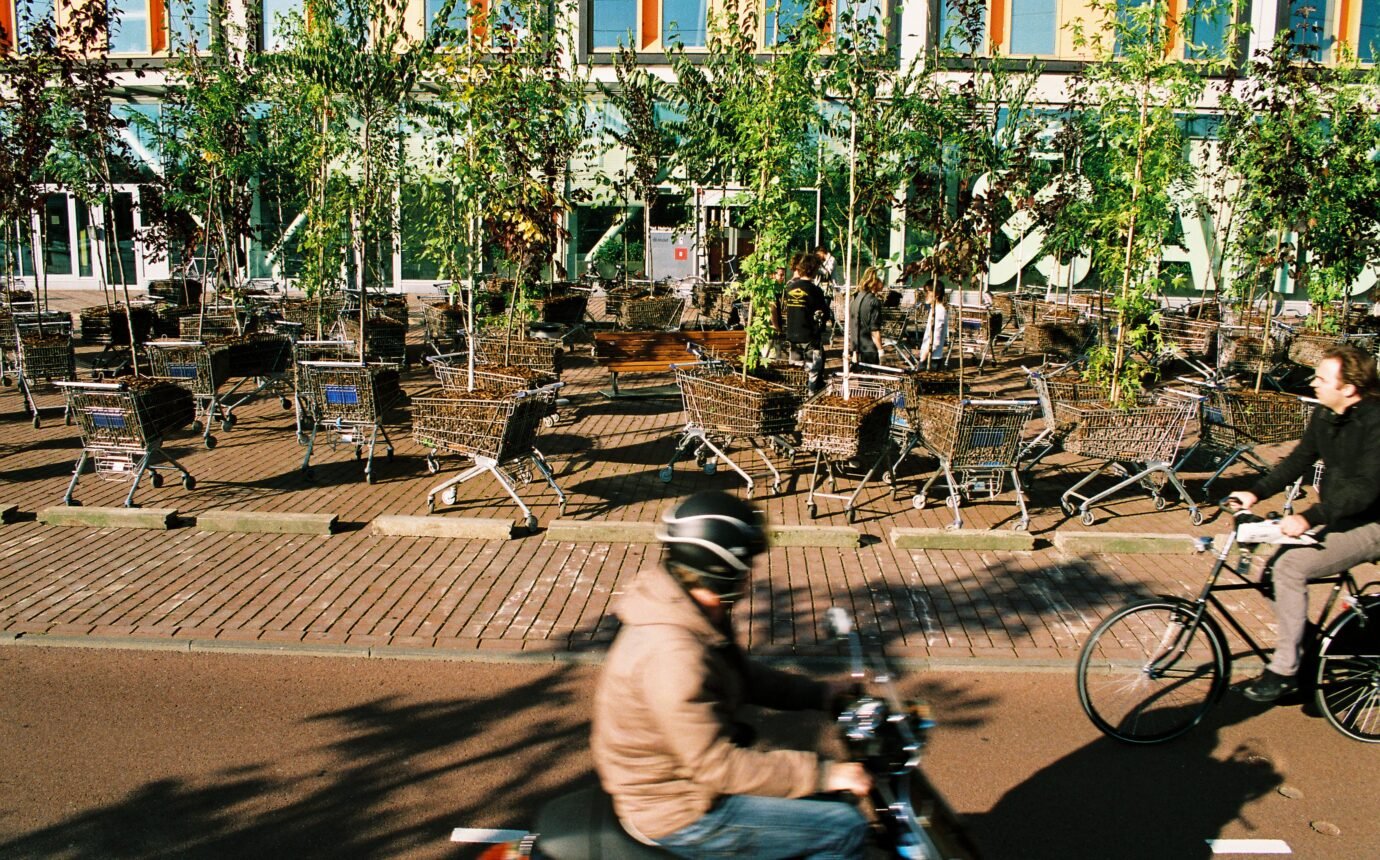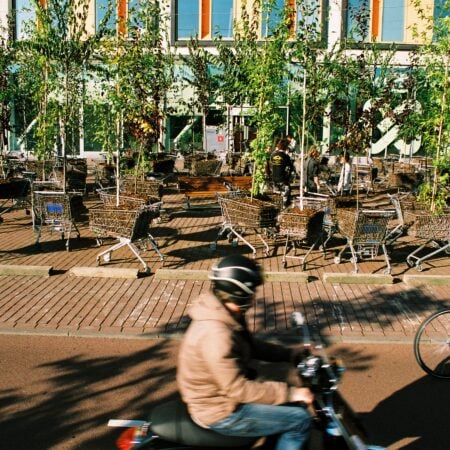The Lassonde Art Trail Has Big Dreams


Promising a transformative cultural experience on the new island rising in the Port Lands
Ookwemin Minising, the new island taking shape in the Port Lands, holds so much promise. Waterfront Toronto has planned the neighbourhood, made possible by the naturalization of the Don River, to be climate-positive. Some 9,000 homes will go up here (with 2,700 units dedicated to affordable housing) and their residents as well as visitors to the area will have unprecedented access to the water and acres of public parks. Even with the masterplan’s shortcomings (namely an aversion to density and a continuation of Toronto’s rigid, car-first grid plan), it’s an exciting development—the creation of a whole new district from scratch—in a city that craves bolder urban visions.
One of the plan’s most anticipated features will doubtless be the Lassonde Art Trail, a 4.2-kilometre landscape animated year-round by temporary and permanent works from Canada’s, and the world’s, most renowned artists. It’s still a ways away—the launch is slated for summer 2026—but LAT has already embarked on ambitious commissions made possible by the unprecedented site.
“Part of the real innovation with this art trail is the planning that went into it,” explains Chloë Catán, LAT’s executive director. “Waterfront Toronto and MVVA, which worked closely together on the Port Lands’ flood protection project, really thought about how to make art programming as easy and as flexible possible as possible. They came up with a kind of hidden system of infrastructure along the park system that could readily receive all kinds of art. For instance, some of the art spaces require electrical plugins; others need water connections. That foresight of building a city asset focused on art programming was a core element in the public realm.”
The trail is named after Pierre Lassonde, the mining industry exec and arts philanthropist who contributed $10-million to get the project off the ground and is offering $15-million in matching funds. LAT will partner with arts organizations around the world to foster dynamic programming. One of the first artists who will be featured on the trail, the Berlin-based Kuwaiti creator Monira al Qadiri delves into the “cultural histories of the Gulf region” and its “petro-culture” with a sci-fi-inflected speculative lens in everything from sculptures to performance. Her temporary work, which will debut in New York’s Central Park before making its way to Toronto, represents a collaboration with the Public Art Fund.
LAT’s partnership with the revered American non-profit was a no-brainer. “This way, our artists and their projects will have multiple opportunities to be exhibited,” explains November Paynter, LAT’s Artistic Director and Chief Curator. “It allows us to tap into a bigger network internationally—and give artists exposure to that network—as well as to collaborate on the fundraising and the cost.” Adds Catán, “Melanie Kress, PAF’s senior curator, actually came down to the site a couple of times and was just blown away by its sheer ambition. I think that’s a really important thing to highlight, and to make this connection between what will be our major destination park on Toronto’s waterfront and Central Park in New York.”
Toronto-based sculptor Kara Hamilton will also contribute a piece to kick off the trail’s opening. She’ll work with York University students through a residency to explore materials like rammed earth and cob which, as LAT’s website explains, “will result in a sculpture that is empathetic to natural ecosystems occurring on the future art trail.”
The connection to the context is especially important to world-renowned Cree artist Kent Monkman. In what is probably LAT’s most exciting news yet, Monkman will create a permanent work for the trail. “This will be his first public art work,” says Catán, “and it’ll be right by the water, which was significant for him and his and the concept for his artwork.” From a competition among five shortlisted luminaries—Shezad Dawood, Nicole Eisenman, Shilpa Gupta, Yinka Shonibare and Joana Vasconcelos—LAT will select the creator of its second permanent work. “Most of the program will be new works produced specifically for the site,” explains Paynter. “They will be site responsive, thinking about everything from the bio engineering that went into the new flood protection program to issues of flood protection, post-industrial sites, the city skyline. There’s so much information that artists can tap into.”
The Lassonde Art Trail has big dreams – and the means to make them happen. It will be a one-of-a-kind place to immerse oneself in art in the public realm.“People can walk, cycle and boat past these works – they’ll also be able to fly over them from Billy Bishop,” says Catán. “There’s just multiple ways to also experience it.”




















